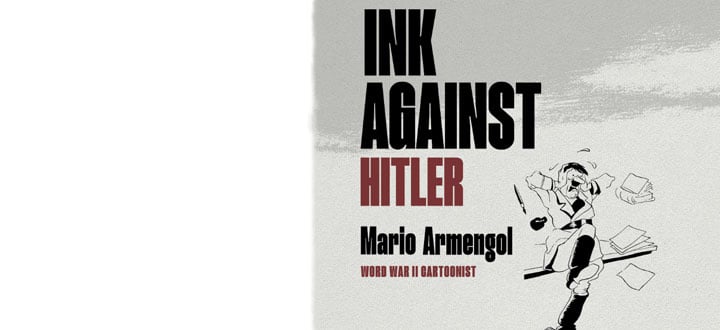Art and commitment. About this guide
All the themes selected for the elaboration of the guide are based on the themes and works present in the dynamic visit Art and commitment during the Civil War, a perspective from the culture of peace, with the intention that it serves to deepen in some of the aspects that are worked on. The visit offers a range of learning opportunities that cannot be developed with the duration of the activity in the museum, and that can be carried out with better conditions around the educational center.
You will find five proposals, designed to be developed preferably in two sessions; between two and three hours for each pedagogical proposal. The number of hours will depend on the adaptation made by each professional of the activities, as well as the type of evaluation carried out. The pedagogical approach of the proposal seeks experiential and reflective learning, in which students have to generate answers to open questions, and link new learning with their daily experience. All proposals have the following structure:
- A summary of the contents of the proposal.
- Elements for reflection: introduction and explanation of the subject, where references are shared to explore the proposed topics.
- Class action!: Here the protagonism falls on the students, and practical proposals are offered to explore the topics from experimentation and creative processes. Proposals for the evaluation of activities are included.
- To know more: list of sources (books, websites, audiovisual material, entities, etc.) that serve as a starting point to expand the contents of the activities.
EDUCATIONAL PURPOSES
-
Incorporate education for peace and conflict within the formal education system.
-
Integrating art and artistic expression as valid and powerful tools to interpret the world and at the same time express the internal world, mainly in relation to the transformation of conflicts.
- Show a critical and open attitude towards the environment that surrounds us.
- Understand dynamics and positions that occur in macro (social and/or historical) conflict, to promote self-knowledge in everyday conflict.
- Promote the positive assessment of museums as spaces for meaningful and contextualized learning.
Below we present a table in which the link of the proposals of activities with the official secondary school curriculum is specified.
First of all, we present the links of the pages where you can find the CV documents to consult the different basic competencies by areas, as well as the recommendations of their deployment that is proposed in the official curriculum.
|
Areas of competences
|
Didactic dimensions |
Concrete competences |
|
Basic competences of the artistic field
|
Expression dimension
interpretation and creation
|
Competence 5: Compose with elements of artistic languages using tools and techniques typical of each field. |
|
Competence 6: Experiment and/or improvise with instruments and techniques of artistic languages. |
||
|
Competence 7: Develop disciplinary or transdisciplinary artistic projects, both personal and collective. |
||
|
Dimension of society and culture |
Competence 8: Assess with respect and critical sense the artistic productions in their contexts and functions. |
|
|
Competence 9: Enjoy artistic experiences and creations as a source of personal and social enrichment. |
||
|
Competence 10: Make use of artistic knowledge and its productions as a means of cohesion and pro-social action. |
||
|
Basic competences of the culture and values field |
Personal dimension |
Competence 3: Question and use argumentation to overcome prejudices and to consolidate one's own thinking. |
|
Competence 4: Identify the ethical aspects of each situation and give appropriate and preferably innovative answers. |
||
|
Interpersonal dimension
|
Competence 5: Show attitudes of active respect towards other people, cultures, options and beliefs. |
|
|
Competence 6: Apply the dialogue and exercise all the skills that it entails, especially for the resolution of interpersonal conflicts and to promote the culture of peace. |
||
|
Socio-cultural dimension |
Competence 7: Understand and value our world based on the cultural roots that have shaped it. |
|
|
Competence 8: Copsing the ethical dimensions of the great literary stories and artistic works. |
||
|
Competence 9: Critically analyze the environment (natural, scientific-technological, social, political, cultural) from an ethical perspective, individually and collectively. |
||
|
Competence 10: Carry out participation and collaboration activities that promote attitudes of commitment and democracy. |
||
|
Basic competences of the social field |
Historical dimension
|
Competence 1: Analyze the changes and continuities of historical events or phenomena to understand their historical causality. |
|
Competence 2: Apply the procedures of historical research from the formulation of questions and the analysis of sources, to interpret the past. |
||
|
Competence 3: Interpreting that the present is a product of the past, to understand that the future is the result of current decisions and actions. |
||
|
Competence 4: Identify and value individual and collective identity to understand their intervention in the construction of historical subjects. |
||
|
Cultural and artistic dimension
|
Competence 8: Analyze cultural manifestations and relate them to their creators and their time, to interpret the various cosmovisions and their purpose. |
|
|
Competence 10: Assess one's own cultural expressions, to promote the construction of personal identity within a global and diverse world. |
||
|
Citizen dimension |
Competence 13: Pronounce and commit to the defense of justice, freedom and equality between men and women. |
Ciizen dimension










